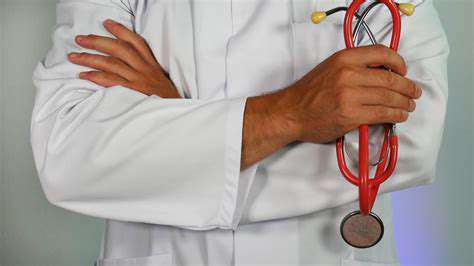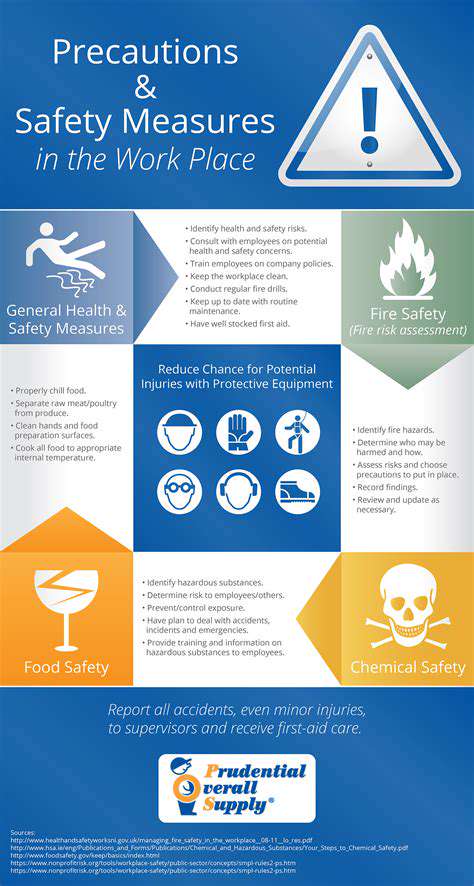Tension Headaches: Causes, Symptoms, and Effective Remedies
What Causes Tension Headaches?
Physical Factors Contributing to Tension Headaches
Tension headaches can often be linked to physical factors such as poor posture or muscle tension. When individuals sit or stand in unnatural positions, certain muscle groups may become strained, leading to discomfort and headaches.
Moreover, activities that involve repetitive motions, such as typing or using a mouse for extended periods, can exacerbate muscle tension in the neck and shoulders. This tension can radiate to the head, resulting in pain.
Additionally, inadequate sleep or fatigue can heighten muscle tension. Fatigue can weaken the body's ability to manage stress, and this may increase susceptibility to headaches.
Body mechanics play a significant role as well. Engaging in heavy lifting or participating in sports without proper conditioning may also lead to tension headaches due to overexertion of the neck and shoulder muscles.
Emotional Triggers of Tension Headaches
Stress is one of the most significant emotional triggers for tension headaches. Whether it arises from work, relationships, or financial pressures, excessive stress can lead to tightening of muscles in the head, neck, and shoulders.
Anxiety and worry can also contribute to this type of headache. When individuals experience high levels of anxiety, their bodies may enter a heightened state of tension, making headaches more likely to occur.
Moreover, feelings of frustration or anger can create additional emotional strain. This emotional turbulence can create a feedback loop, where the headache leads to increased tension and vice versa.
Techniques such as mindfulness, meditation, or controlled breathing can help manage stress and emotional triggers, potentially reducing the incidence of tension headaches.
Environmental Factors That Induce Tension Headaches
Certain environmental factors can also contribute to the onset of tension headaches. For instance, high levels of noise or bright lights can lead to discomfort and trigger pain.
Changes in weather, such as abrupt temperature drops or increases, can impact atmospheric pressure, which may trigger tension headaches in sensitive individuals.
Furthermore, prolonged exposure to screens—whether computers, televisions, or smartphones—can cause digital eye strain, which often leads to headaches as the muscles around the eyes become fatigued.
Creating a conducive environment for work or relaxation, such as reducing noise levels or ensuring adequate lighting, can play a crucial role in preventing tension headaches.
Effective Remedies for Managing Tension Headaches
There are various remedies for managing tension headaches, including both lifestyle changes and medical treatments. Regular physical activity can help relax muscles and reduce the frequency of headaches.
Practices such as yoga and stretching can improve flexibility and reduce muscle tension, targeting the areas most affected by tension headaches.
Over-the-counter pain relievers such as ibuprofen or acetaminophen can provide immediate relief. However, it's essential to use these medications sparingly to avoid potential side effects or medication overuse headaches.
Additionally, incorporating relaxation techniques, such as deep breathing exercises or guided meditation, can foster a sense of calm that actively combats the buildup of stress and tension that leads to headaches.
Recognizing the Symptoms of Tension Headaches

Common Signs of Tension Headaches
Tension headaches are often characterized by a persistent aching sensation on both sides of the head. Unlike migraines, they typically do not involve debilitating pain but can lead to considerable discomfort.
In addition to the dull pain, individuals may experience tenderness in the scalp, neck, and shoulder areas. It is important to recognize these symptoms early to address them effectively.
Triggers and Factors Contributing to Tension Headaches
A variety of factors can trigger tension headaches, including stress, poor posture, and lack of sleep. Understanding these triggers is essential to prevent future occurrences.
Other contributing factors may include dehydration and eye strain from prolonged screen time. By identifying personal triggers, individuals can develop strategies to mitigate them.
Effective Remedies and Management Strategies
Over-the-counter pain relievers, such as ibuprofen or acetaminophen, can provide quick relief for tension headaches. However, long-term relief often involves lifestyle modifications.
Practices such as regular exercise, mindfulness, and maintaining a consistent sleep schedule can significantly reduce the frequency of tension headaches. Additionally, physical therapy may help in managing chronic discomfort.
Effective Remedies for Tension Headaches
Understanding Common Triggers
Tension headaches can be provoked by a myriad of factors that vary from person to person. Common triggers include stress, poor posture, and even fatigue. Recognizing these triggers is essential for effective management.
Stress is one of the most common contributors to tension headaches. It can stem from work-related pressures, family responsibilities, or personal issues, leading to tight muscles and tension in the neck and shoulders, which can escalate to headaches.
Poor posture, particularly while working at a desk or using electronic devices, can also strain the neck and back muscles, creating a domino effect that results in headache pain. Being mindful of your posture can significantly reduce the likelihood of headaches occurring.
Natural Remedies and Lifestyle Changes
Incorporating natural remedies into your daily routine can offer significant relief from tension headaches. Practices like yoga and meditation can help alleviate stress and promote relaxation, which can be beneficial in preventing headaches.
Staying hydrated is another crucial aspect of headache prevention. Dehydration can trigger headaches, so it's essential to drink enough water throughout the day. Aim for at least eight glasses, adjusting according to your activity level and environment.
Regular physical activity not only helps strengthen muscles but also boosts mood and reduces stress. A consistent exercise routine, even if it’s just daily walks, can help reduce the frequency and intensity of tension headaches.
Over-the-Counter Solutions
Over-the-counter (OTC) medications are often the first line of defense for individuals experiencing tension headaches. Products containing aspirin, ibuprofen, or naproxen can provide temporary relief from headache pain.
It’s essential to use these medications as directed to avoid potential side effects or medication overuse headaches, which can occur if pain relievers are taken too frequently. Consulting with a healthcare provider can aid in developing a safe and effective pain management plan.
In addition to traditional medications, consideration of topical treatments such as menthol gels or heat patches can also serve as effective adjuncts, providing localized relief by soothing tight muscles in the head and neck area.
When to Seek Professional Help
While many tension headaches can be managed at home, certain situations warrant a visit to a healthcare professional. If headaches persist frequently or disrupt daily life, it may be time to explore underlying issues or alternative treatments.
Furthermore, if there's a noticeable change in the pattern of headaches or if they are accompanied by severe symptoms such as vision changes, confusion, or neurologic deficits, immediate medical attention is critical. These could signify more serious issues that need to be addressed promptly.
Ultimately, working with a healthcare provider can provide personalized recommendations, rule out other conditions, and may include referrals to specialists, such as physical therapists or psychologists, for comprehensive headache management strategies.




